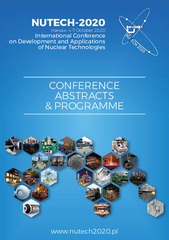Приказ основних података о документу
Optimization of injected radiotracer volume for flow meter calibration in closed conduits
| dc.creator | Pavlović, Miroslav | |
| dc.creator | Bartl, Pavel | |
| dc.creator | Pantović Pavlović, Marijana | |
| dc.creator | Stevanović, Jasmina | |
| dc.creator | Radak, Bojan | |
| dc.date.accessioned | 2023-09-08T12:41:14Z | |
| dc.date.available | 2023-09-08T12:41:14Z | |
| dc.date.issued | 2020 | |
| dc.identifier.isbn | 978-83-946412-4-5 | |
| dc.identifier.uri | https://cer.ihtm.bg.ac.rs/handle/123456789/6559 | |
| dc.description.abstract | In chemical processes it is of essential for flow in the process to be accurate and well defined. Fluid velocity measurements are important for fluid flow quality performance in the systems. This study focuses on determination of volumetric flow rate measurement and on calibration of conventional flowmeter using industrial radiotracer approach. In this work, the application of radiotracer method for RTD measurement in flow meter calibration for chemical industry is described. The experiments in pilot-scale flow rig were performed using Technetium-99 m ( 99mTc) as a radiotracer in the form of pertechnetate ion (99mTcO4 - ) to calibrate flow meter. The data were evaluated using plug flow with axial dispersion model of RTD software. The optimization of the parameters included input signal of radiotracer, concentration of radiotracer and position of detectors. The measured data were analyzed, and precision of experimental setup was investigated under two different approaches. A plug flow with axial dispersion was used to simulate the measured RTD curves and investigate flow dynamics of the flowing water. The results of the study, showed that there might be an optimum injection volume range of the tracer for each specific application. The optimum range in this study was determined from 300 to 700 µL. In this range, relative standard deviation was around 1% for both calculation methods, which is lower than with other available injection volumes. Bias of the initial flow rate was lower using summation approximation, resulting in ca 9% in the area of interest. In case of RTD software, bias values were between 10 and 11%. For the first time the variation of standard deviation of calculated flow rate with injection volume and activity of radiotracer was determined. The results of the study may help in injection volume optimization as well as give a guide on how to process data without RTD software, as the results obtained by both methods were in great agreement. They also revealed a slight dependency of the precision of output results on the injection volume as well as similar results for manual and specialized RTD software data processing. The study that investigated the change of standard deviation of calculated flow rate with injection volume and activity of used radiotracer was conducted for the first time in literature. | sr |
| dc.language.iso | en | sr |
| dc.publisher | Warsaw, Poland : Instytut Chemii i Techniki Jądrowej | sr |
| dc.relation | info:eu-repo/grantAgreement/MESTD/inst-2020/200026/RS// | sr |
| dc.rights | openAccess | sr |
| dc.rights.uri | https://creativecommons.org/licenses/by/4.0/ | |
| dc.source | Conference abstracts & programme - International Conference on Development and Applications of Nuclear Technologies – NUTECH 2020, October 4-7, Warsaw, Poland | sr |
| dc.subject | Radiotracers | sr |
| dc.subject | Flow meter | sr |
| dc.subject | calibration | sr |
| dc.subject | RTD | sr |
| dc.subject | Technetium-99m | sr |
| dc.title | Optimization of injected radiotracer volume for flow meter calibration in closed conduits | sr |
| dc.type | conferenceObject | sr |
| dc.rights.license | BY | sr |
| dc.citation.spage | 80 | |
| dc.citation.epage | 80 | |
| dc.identifier.rcub | https://hdl.handle.net/21.15107/rcub_cer_6559 | |
| dc.identifier.fulltext | http://cer.ihtm.bg.ac.rs/bitstream/id/26789/M34-1.pdf | |
| dc.type.version | publishedVersion | sr |


